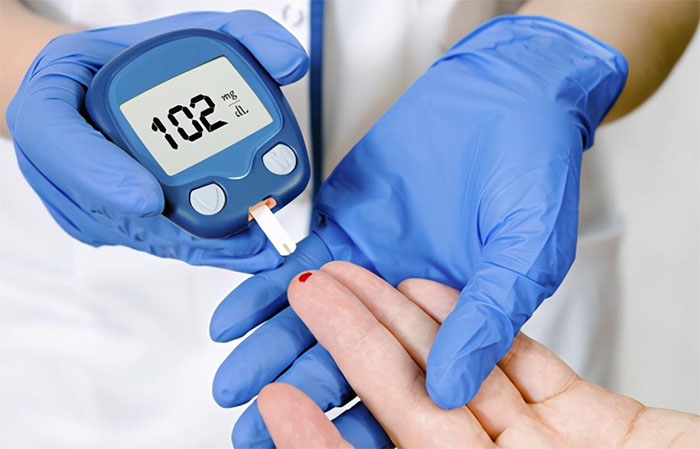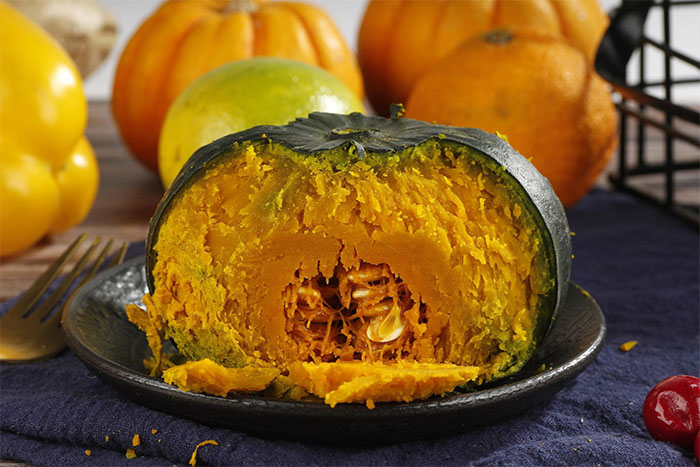- Login
- Cart{{shopingCartNum}}
- English
Most diabetes patients are quite conflicted about their diet in their daily life. For example, can they eat pumpkin? It is believed that pumpkin has very high nutritional value, and eating it properly can help to protect the stomach and promote health. However, many people believe that pumpkin has a relatively high sugar content, which can affect blood sugar stability, so they dare not eat it at all.

Research data shows that most patients with high blood sugar have experienced excessive thirst before being diagnosed, which is actually related to blood sugar metabolism. As blood sugar is metabolized, it takes away some water, leading to a feeling of dehydration. Therefore, if you experience severe thirst for a period of time, you must pay close attention to it.
When the skin becomes dry and itchy, if it can be relieved with medication, there's no need to be too anxious. However, if the condition doesn't improve even after seeing a doctor, it may be a sign of diabetes. Elevated blood sugar can lead to varying degrees of nerve fiber atrophy, resulting in skin abnormalities.
Elevated blood sugar often accompanies numbness in the feet, as it easily affects the nerves in the feet, leading to numbness. In particular, blood circulation slows down, decreasing the ability to sense temperature. Therefore, it's important to pay attention to controlling blood sugar levels in daily life.
Some people, after their blood sugar rises and they fail to manage it properly, experience continued elevation in blood sugar. As a result, they frequently wake up at night to urinate. Additionally, elevated blood sugar can cause dry mouth, leading to increased water intake and subsequently increased urine output. Furthermore, there are diuretic substances in the blood that can also contribute to nocturia.

For women, pumpkin is an excellent food that not only promotes smooth bowel movements but also helps enhance the skin's appearance. It not only improves the skin but also enhances complexion. Therefore, women should consider eating more pumpkin.
Pumpkin contains abundant carotene, which converts to vitamin A in the body. It helps maintain visual and skin health, improves night blindness, rough skin, and brightens the eyes. Especially for office workers or students, eating more pumpkin can help protect vision.
Pumpkin is rich in dietary fiber, which aids intestinal peristalsis, promotes excretion, and facilitates digestion and absorption. Additionally, the flavonoids in pumpkin can promote the secretion of gastric juice and bile, aiding in intestinal digestion and absorption while alleviating gastrointestinal discomfort.
Pumpkin is rich in lycopene, carotene, zinc, and other substances, all of which have antioxidant properties that inhibit the growth of cancer cells, offering preventive effects against ovarian and prostate cancers.
Pumpkin is rich in zinc, which is involved in the synthesis of nucleic acids and proteins in the body and is an important substance for human growth and development.
Pumpkin is referred to as the "miracle hypoglycemic fruit" mainly because it contains two hypoglycemic substances: chromium and pumpkin polysaccharides. According to research, chromium is an important trace element in the human body for regulating blood sugar. It can promote the utilization of glucose and its conversion to fat, improving and enhancing insulin. For diabetes patients, it can indeed help control blood sugar.
Diabetic patients can use pumpkin as a staple food in their regular meals, reducing the intake of other staple foods. For example, if one consumes about 100 grams of pumpkin during a meal, the intake of other staple foods should be reduced by about 20 grams.
At the same time, patients should not eat pumpkin frequently. Nutritionists advise diabetic patients to eat pumpkin 1-2 times a week, with each serving ranging from 100-200 grams.

When cooking pumpkin, it's best not to fry it, as it will turn the pumpkin into a high-calorie food. The best way to eat it is steamed, which can preserve the nutrients in the pumpkin to the greatest extent without adding excessive calories. Some people who are prone to allergies or have jaundice symptoms are not advised to eat pumpkin, as it can exacerbate their symptoms.
When selecting pumpkins, choose according to your own needs. The darker the color of the pumpkin flesh, the higher the carotene content. Sweeter pumpkins contain more soluble sugars, while those with a denser texture have higher starch content. The differences in vitamin C, potassium, and other components among different varieties are not significant.